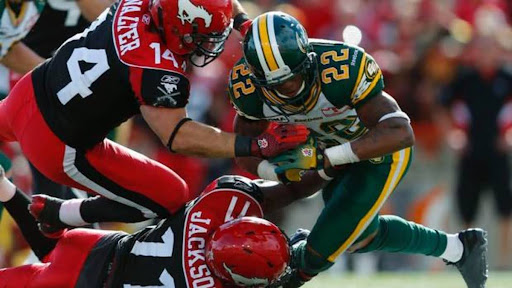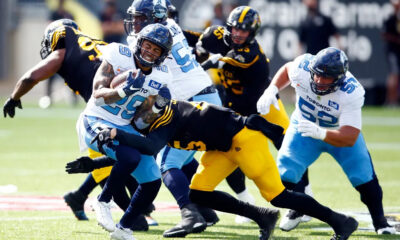
In the realm of professional football, two prominent leagues reign supreme in North America: the Canadian Football League (CFL) and the National Football League (NFL). While the NFL has established itself as a juggernaut in the United States, with a massive following and global recognition, the CFL holds a place of pride in Canada, boasting a rich history and a passionate fan base. Despite sharing a common root in the sport of football, these leagues differ significantly in their rules, play styles, and strategies. This article, brought to you in part by Mostbet-27, aims to dissect these differences, offering an in-depth analysis of how the CFL and NFL have each developed unique identities.
We will explore the historical evolution of both leagues, delve into the nuances of their gameplay, and examine the distinct strategies that teams and players employ. By understanding these differences, we can appreciate not just the competitive nature of the sport, but also the cultural and regional flavors that make Canadian and American football uniquely captivating.
Historical Context and Evolution
The Canadian Football League (CFL) and the National Football League (NFL) both have rich histories that have significantly influenced their current forms. The CFL traces its origins to the 1950s, but its roots go back to the 1860s with the inception of Canadian rugby football. The league evolved from a series of regional leagues in Canada, which eventually consolidated to form the modern CFL. This evolution was marked by a distinct Canadian identity, embracing wider fields and longer games, reflecting Canada’s embrace of its unique sporting culture. On the other hand, the NFL’s beginnings date back to the early 1920s in the United States, growing out of American collegiate football traditions. Its evolution was driven by a desire to professionalize the sport, moving away from its amateur roots. The NFL underwent significant changes in its early years, including team expansions, mergers, and the establishment of a standardized set of rules. This period saw the NFL’s transformation into a commercially successful and widely popular professional sports league.
The paths of the CFL and NFL diverged notably in response to their respective cultural and sporting environments. The CFL maintained and developed rules that encouraged a more open and fast-paced game, such as larger fields and more players on the field. In contrast, the NFL honed a style that emphasized physicality and strategic depth, with a smaller playing field and a different scoring system. These historical paths have had lasting impacts on each league’s identity. The CFL is often seen as retaining a closer connection to the sport’s amateur and community-based roots, with a focus on accessibility and local engagement. The NFL, meanwhile, has become synonymous with professional sports’ commercial and entertainment aspects, setting standards in sports marketing and broadcasting.
The distinct historical trajectories of the CFL and NFL have led to each league fostering unique traditions, fan cultures, and approaches to the game. This has not only shaped the way football is played in each league but has also influenced the broader sports culture in Canada and the United States. As we delve deeper into the specific differences in gameplay and strategy, the historical context of these two leagues provides a crucial backdrop for understanding their current forms.
Comparing Rules and Gameplay
The divergent paths of the Canadian Football League (CFL) and the National Football League (NFL) are most prominently reflected in their rules and gameplay. These differences significantly affect the strategies, pace, and overall style of play in each league, contributing to the Evolution of football tactics over time.
- Field Dimensions and Player Numbers: One of the most noticeable differences lies in the field dimensions. The CFL field is larger, measuring 110 yards long and 65 yards wide, with end zones 20 yards deep. In contrast, the NFL field is 100 yards long and 53⅓ yards wide, with 10-yard deep end zones. Additionally, the CFL features 12 players per side, as opposed to the NFL’s 11. These differences result in more open space in the CFL, influencing the style of play to be more pass-oriented and fast-paced.
- Downs and Clock Management: The CFL allows teams three downs to advance the ball ten yards, compared to the NFL’s four downs. This rule in the CFL encourages a more aggressive approach to offensive play. Furthermore, the play clock in the CFL is set to 20 seconds after the referee whistles the play in, compared to the NFL’s 40-second clock. This leads to a quicker pace of play in the CFL.
- Scoring and Movement: While scoring is similar in both leagues, the CFL has a unique feature called the “single” or “rouge,” where a team earns one point for a kick that is not returned out of the end zone. This rule adds an extra strategic layer to kicking plays. Movement before the snap is another area of difference. In the CFL, multiple offensive players can be in motion and move towards the line of scrimmage before the snap, while in the NFL, only one player can be in motion and cannot be moving towards the line of scrimmage at the snap.
- Passing and Receiving Rules: The CFL’s larger field and additional player contribute to a more pass-heavy game. The league also has slightly different rules regarding pass receptions – in the CFL, only one foot is needed in bounds for a catch to be legal, compared to the NFL’s requirement of two feet.
These differences in rules and gameplay not only affect the strategies employed by teams but also reflect the unique character of each league. The CFL’s rules promote a faster, more open style of play, while the NFL emphasizes physicality and strategic execution. The way players and coaches adapt to these rules highlights the diverse skill sets and tactical approaches prevalent in Canadian and American football.
Player Development and Talent Pool
The Canadian Football League (CFL) and the National Football League (NFL) not only differ in their rules and gameplay but also in their approaches to player development and the composition of their talent pools.
- Player Development Pathways: In the NFL, the primary route for player development is through the American college football system. The NFL Draft is a significant annual event where teams select eligible players primarily from U.S. colleges. This system is deeply integrated with the NFL, creating a well-established pathway for talent to transition from amateur to professional status.
In contrast, the CFL draws from a broader range of sources. While Canadian university football does provide talent, CFL teams also scout players from American colleges, particularly those who may not fit the typical mold for the NFL due to size, style of play, or other factors. Additionally, the CFL has its own draft for Canadian players, emphasizing homegrown talent and maintaining a quota of Canadian players on each team.
- Talent Pool Characteristics: The talent pool in the NFL is characterized by a high level of athleticism and specialization. Players often train for specific roles from a young age, resulting in a deep pool of talent tailored to the NFL’s style of play. The physicality and speed demanded by the NFL mean that players in this league are often at the pinnacle of athletic performance in the sport.
The CFL’s talent pool, while also highly skilled, tends to be more diverse. Players in the CFL often adapt to multiple roles and are more versatile, partly due to the league’s different rules and style of play. For instance, the larger field and additional players on the field in the CFL create a need for speed and endurance, as well as a different type of physicality compared to the NFL.
- Geographical and Cultural Influences: Geography and culture also play significant roles in shaping the player development and recruitment strategies in both leagues. The NFL, with its larger market and higher profile, attracts top talent from across the United States and even internationally. The CFL, while having a strong presence in Canada, also benefits from its proximity to the U.S., allowing it to access a wide pool of players who have trained in American football but are seeking opportunities that the CFL provides.
The contrasting approaches to player development and the resulting differences in the talent pool between the CFL and NFL underscore the unique aspects of each league. While the NFL focuses on specialized, high-performance athletes, the CFL’s broader approach allows for a more varied and adaptable range of player skills and styles, contributing to the distinctive nature of Canadian football.
Unique Strategies and Team Dynamics
The strategic nuances and team dynamics in the Canadian Football League (CFL) and the National Football League (NFL) are profoundly influenced by their respective rules, gameplay styles, and player pools. These differences shape how teams in each league approach the game, plan their plays, and manage their rosters.
- Strategic Approaches in the CFL: Due to the larger field and an extra player, CFL teams often adopt strategies that emphasize speed and agility. The wide-open spaces allow for more creative and diverse passing plays, and the three-down structure necessitates a more aggressive offensive strategy. Teams in the CFL must be efficient and strategic in their play-calling, as they have one fewer down to advance the ball. The motion rules before the snap also add a layer of complexity, enabling teams to employ deceptive and dynamic pre-snap movements. On defense, the emphasis is on speed and coverage skills, with a focus on adapting to a wide range of offensive tactics.
- NFL’s Tactical Depth: The NFL, with its four-down structure and smaller field, allows teams to develop more varied and complex strategies. The emphasis is often on physicality and control, with a significant focus on the running game and short to intermediate passing plays. The NFL’s play-calling tends to be more methodical, with a greater emphasis on possession and time management. Defensively, the NFL requires a balanced focus on stopping both the run and the pass, leading to a high level of specialization among defensive players.
- Team Dynamics and Coaching Styles: Coaching styles in the CFL often reflect the need for adaptability and innovation due to the league’s unique rules. Coaches must be adept at maximizing their players’ versatile skill sets and exploiting the larger playing field. In the NFL, coaching often involves more intricate game planning and in-depth analysis, with a focus on exploiting specific matchups and controlling the game’s tempo.
- Special Teams Play: Special teams play a notably different role in each league. The CFL’s wider field and the ‘single’ point rule make special teams an integral part of the game strategy, often affecting the outcome of games. In the NFL, while special teams are important, the focus is more on precision and field position.
These strategic differences are a reflection of the distinct identities of the CFL and NFL. The CFL’s strategies are shaped by the need for speed, versatility, and adaptability, while the NFL’s strategies revolve around physicality, control, and tactical depth. Understanding these strategic and team dynamics provides a window into the diverse ways the game of football is interpreted and executed in Canada and the United States.
The exploration of the Canadian Football League (CFL) and the National Football League (NFL) reveals two leagues that, while rooted in the same sport, have evolved uniquely, each reflecting the cultural, historical, and sporting preferences of their respective countries. The CFL, with its larger fields, three downs, and emphasis on speed and adaptability, offers a fast-paced, dynamic version of football. It celebrates a style of play that is distinctively Canadian, echoing the country’s sporting heritage and cultural values. On the other hand, the NFL, with its four-down system, smaller field, and focus on physicality and tactical depth, has become a symbol of American sports excellence, embodying the competitive spirit and entertainment value highly prized in the United States.
These differences in rules, gameplay, player development, and strategies are not just technical distinctions; they represent the diverse ways in which the game of football can be interpreted and enjoyed. The CFL and NFL, in their unique approaches, contribute to the rich tapestry of North American sports culture, offering fans and players alike varied experiences of the same sport. Looking to the future, both leagues continue to evolve, adapting to new challenges and opportunities. Whether it’s advancements in player safety, changes in the global sports landscape, or the ongoing quest for innovation in gameplay and entertainment, the CFL and NFL will undoubtedly continue to shape and be shaped by the societies they represent. As they do so, the comparison of these two leagues remains a fascinating study in how a single sport can manifest in different forms, each resonating with its audience in a manner that is both distinct and compelling.
Continue the CFL Football discussions on our offical CFL Discord Channel

Big Announcement: CFL Unveils Free Live Streaming Platforms
Get Alerts & Stay Connected
CFL iPhone AppCFL Android App




















